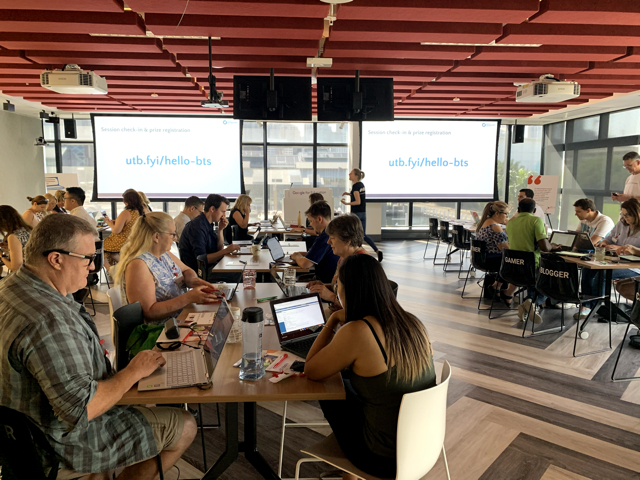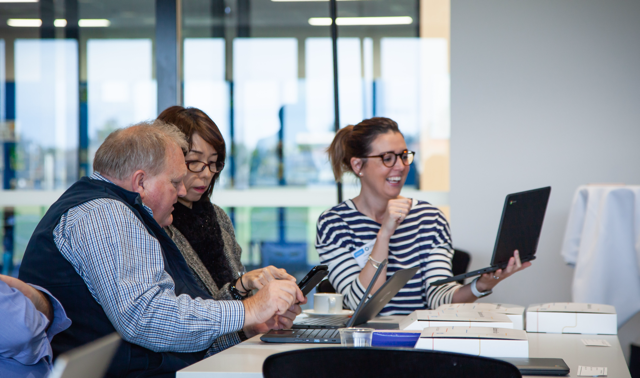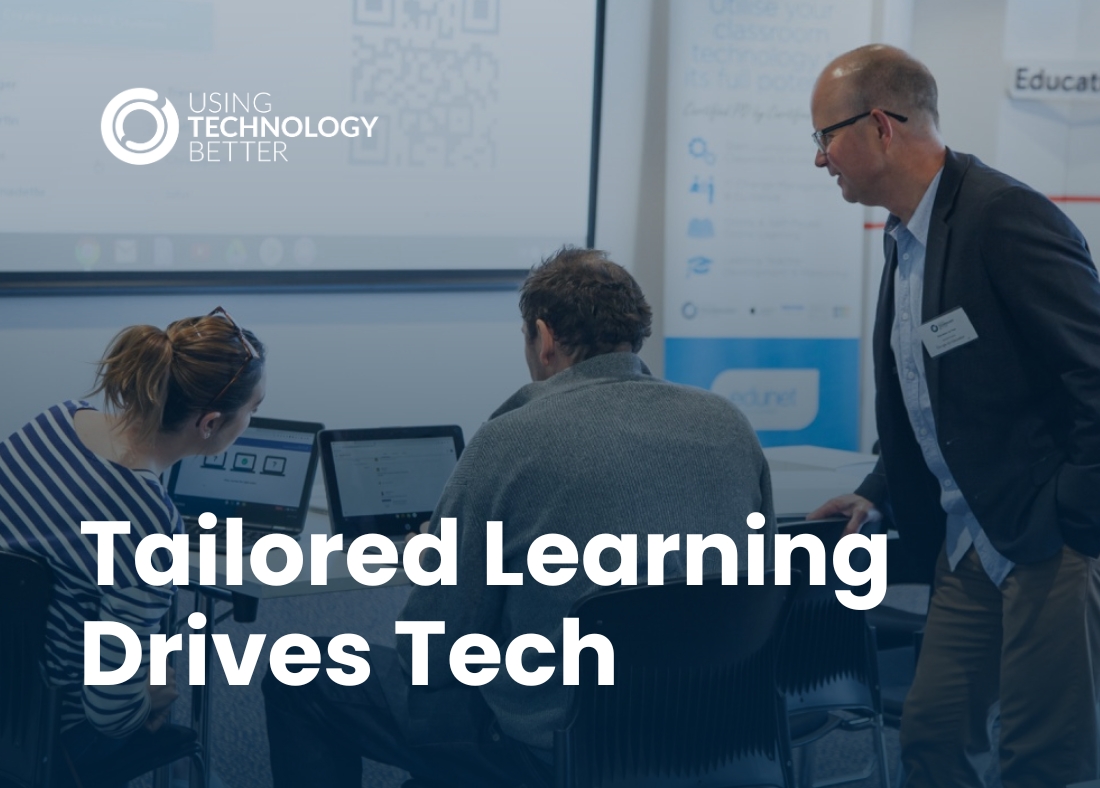Imagine rolling out new technology in your organisation, only to find that no one really knows how to use it. Frustrating, right?
Technology adoption can be challenging, but I’ve found that creating personalised training plans is a game-changer. It’s not just about learning the tools; it’s about making them work for you. In this blog, I’ll share how personalised training plans can help your organisation thrive, along with some real-world success stories.
By tailoring training plans to the unique needs of your team, we can boost productivity, enhance collaboration, and ensure a smooth transition to embedding new technology.

Customisation is Key
In today’s rapidly evolving tech landscape, a one-size-fits-all approach to training is no longer going to cut it.
Creating a one-size-fits-all training program might seem efficient, but it rarely addresses the unique needs of your team. From my experience, personalisation makes all the difference.
Identify Skill Gaps: The first step is understanding where the knowledge gaps are. Conducting a needs assessment can uncover the specific skills your team needs to develop. It’s like putting together a puzzle – every piece matters.
Tailor Content: Once we know what’s missing, we can create a training plan that speaks directly to those needs. Personalised content ensures that everyone gets the most out of the training sessions.
Boost Engagement: Let’s face it, nobody wants to sit through hours of irrelevant information. By focusing on what matters, personalised training keeps your team engaged and motivated to learn.
The Importance of Personalised Training Plans
Identify Skills Gaps
Identifying skill gaps is the foundation of effective training. It involves a deep dive into understanding where each team member stands concerning the technology. I’ve seen organisations skip this step and pay the price with disengaged employees and inefficient technology use. By investing the time upfront to identify these gaps, we can create training that’s relevant and impactful. This tailored approach ensures that every team member gets what they need, whether they’re a beginner or an advanced user, enhancing both confidence and competence.
Tailor Content
Tailoring content is about speaking directly to the audience. It involves crafting training materials that resonate with your team’s specific needs and objectives. For example, if a department is struggling with a new CRM tool, the training should focus on the features that align with their daily tasks and goals. This targeted approach makes training more relevant and engaging, helping employees see the value in what they’re learning. It also allows us to adjust the training style to fit different learning preferences, whether visual, auditory, or hands-on. This way, everyone gets a chance to learn in a way that suits them best.
Boost Engagement
Engagement is key to successful training. When training is personalised, it captures the audience’s attention and keeps them motivated to learn. I’ve facilitated sessions where the content was tailored to real-world applications, leading to lively discussions and meaningful participation. By aligning training with the specific challenges and goals of the team, we make the learning experience relevant and engaging. This not only boosts participation but also fosters a culture of continuous learning and improvement. When people see how training can solve their daily problems and make their work more efficient, they’re more likely to embrace it wholeheartedly.
Collaborating for Success

Partnering with Experts to Design Training Gold
Personalisation isn’t a solo journey; it’s about collaboration and co-creation.
When we design training plans at UTB, we always make sure to include input from various stakeholders. Collaboration ensures that the training aligns with the operational goals and culture across the organisation.
Gather Insights: We start by holding workshops or focus groups to gather insights from different departments. Everyone’s voice is important, and it helps create a more inclusive and representative training environment.
Co-Create Solutions: By working together, we can co-create solutions that address specific challenges. This collaborative approach fosters a sense of ownership and accountability among team members.
Be Flexible: One of the biggest lessons I’ve learned is the importance of being flexible. Training plans should evolve as needs change, so I always make room for adjustments based on feedback and new developments.
Gather Insights
Gathering insights is crucial for creating training that resonates with the team. We host workshops and focus groups, listening to different perspectives and ideas. This collaborative approach fosters a sense of ownership and ensures that the training is aligned with the organisation’s goals and culture. When employees see their input valued, they’re more likely to engage with the training. This collaboration also uncovers potential challenges and areas of improvement, allowing us to address them before they become roadblocks. It’s about building a training plan that truly reflects the needs and aspirations of the people it’s meant to serve.
Co-Create Solutions
Co-creating solutions is about building a partnership with your team. By involving them in the design process, we create training that reflects their real-world challenges and goals. This collaboration fosters a sense of ownership, making employees feel valued and invested in the training. It’s not just about delivering content; it’s about crafting a learning experience that speaks to the heart of the organisation’s culture and objectives. When team members feel heard and included, they’re more likely to embrace the training and apply what they’ve learned in their daily work. This collaborative approach builds trust, accountability, and a shared vision for success.
Be Flexible
Flexibility is the backbone of effective training. No two teams are the same, and neither are their needs. That’s why I always advocate for a training plan that’s adaptable and responsive. We gather continuous feedback and make real-time adjustments, ensuring the training remains relevant and effective. This flexibility not only caters to the evolving needs of the team but also keeps the training dynamic and engaging. It’s about being open to change and willing to refine the training approach to maximise its impact. By staying flexible, we create a learning environment that’s resilient and adaptive, capable of meeting the challenges of an ever-changing landscape.
Real-World Success Stories

Success in Action
When we design training plans at UTB, we always make sure to include input from various stakeholders. Collaboration ensures that the training aligns with the operational goals and culture across the organisation.
Gather Insights: We start by holding workshops or focus groups to gather insights from different departments. Everyone’s voice is important, and it helps create a more inclusive and representative training environment.
Co-Create Solutions: By working together, we can co-create solutions that address specific challenges. This collaborative approach fosters a sense of ownership and accountability among team members.
Be Flexible: One of the biggest lessons I’ve learned is the importance of being flexible. Training plans should evolve as needs change, so I always make room for adjustments based on feedback and new developments.
Case Study 1:
Large School Diocese Migrating from Google Workspace to Microsoft 365
When working with a large school diocese, we faced the challenge of migrating from Google Workspace to Microsoft 365. This was no small feat, considering the diverse needs of various schools within the diocese.
Working Directly with Schools: We engaged directly with each school, creating personalised training plans tailored to their specific needs and technology use. By understanding their unique challenges and objectives, we were able to craft a training program that resonated with their daily operations and goals.
Managing Stakeholder Communications: Communication was key. We managed stakeholder communications to ensure everyone was on the same page and aware of the training’s purpose and benefits. This open line of communication helped us tailor the training to their needs and allowed us to adapt as those needs evolved.
Adaptability to Evolving Needs: As we rolled out the training, we remained adaptable, making adjustments based on feedback and evolving needs. This flexibility ensured that the training stayed relevant and effective, leading to a successful migration and positive feedback from the schools involved.
The migration from Google Workspace to Microsoft 365 was a complex task, requiring a deep understanding of the unique needs of each school within the diocese. By working closely with the schools, we were able to develop personalised training plans that addressed their specific challenges and objectives.
Our approach to stakeholder communication ensured that everyone was informed and engaged, fostering a sense of ownership and accountability. As the training progressed, we made adjustments based on feedback, allowing us to stay agile and responsive to the changing needs of the schools.
The result was a seamless transition to Microsoft 365, with schools reporting increased efficiency and satisfaction with the new platform.
Case Study 2:
Small Non-Profit Maximising Impact with Third-Party Tools
In working with a small non-profit, we discovered they were paying for licensing for third-party tools but weren’t incorporating them effectively into their operations. Our goal was to help them maximise their impact by integrating these tools into their daily workflows.
Needs Assessment and Strategy: We conducted a thorough needs assessment to identify the skills gaps and understand how the third-party tools could enhance their operations. This assessment allowed us to develop a strategy that aligned with their mission and goals, ensuring the tools were used to their full potential.
Tailored Training Content: With the strategy in place, we crafted tailored training content that focused on practical applications and real-world scenarios. This hands-on approach helped the team see the value of the tools and how they could improve their work.
Ongoing Support and Adjustments: Throughout the training, we provided ongoing support and made adjustments based on feedback. This continuous engagement ensured that the training remained relevant and effective, leading to increased productivity and impact for the non-profit.
The non-profit faced challenges in incorporating third-party tools into their operations, leading to wasted resources and missed opportunities. Our approach involved a comprehensive needs assessment, which helped us understand their goals and identify areas for improvement.
By developing a tailored training plan, we were able to show the team how these tools could enhance their work and align with their mission. The hands-on training sessions focused on practical applications, allowing team members to gain confidence and competence in using the tools.
With ongoing support and flexibility, we ensured the training stayed relevant, ultimately empowering the non-profit to maximise their impact and achieve their goals.
Case Study 3:
Large Government Department Addressing Skill Level Disparities
A large government department faced low platform usage due to a lack of understanding that baseline skill levels weren’t aligned. Our task was to conduct a needs assessment, establish the disparity, and develop a customised training plan that targeted specific workshops for specific users.
Conducting a Needs Assessment: We began by conducting a thorough needs assessment to identify the skill level disparities within the department. This assessment uncovered the root causes of the low platform usage and provided a clear path forward.
Customised Training Plan: With the insights gained from the assessment, we developed a customised training plan that addressed the specific needs of different user groups. By targeting specific workshops for specific users, we were able to provide relevant and impactful training.
Targeted Workshops and Skill Building: The targeted workshops focused on building the necessary skills and confidence in using the platform. By aligning the training with the unique needs of each user group, we were able to boost platform adoption and improve overall efficiency within the department.
The government department struggled with low platform usage, largely due to a mismatch in skill levels and a lack of targeted training. Our comprehensive needs assessment revealed the disparities and highlighted areas for improvement. By developing a customised training plan, we were able to address these challenges and provide relevant training that resonated with the team.
The targeted workshops focused on building the necessary skills, ensuring that each user group received training tailored to their specific needs. This approach not only boosted platform adoption but also improved overall efficiency and satisfaction within the department.
The success of this training initiative demonstrated the power of personalised training in driving meaningful change and achieving organisational goals.
Conclusion
Personalised training plans are a vital part of successful technology adoption. By working together to create these plans, we can ensure that they align with the unique needs of your organisation, leading to improved productivity and innovation.
Ready to enhance your organisation’s tech adoption? Start by identifying your team’s unique needs and collaborate to create a personalised training plan. Let’s make technology work for you!
Author Bio:
Nicole Brown
Global Head of Operations – Using Technology Better

















